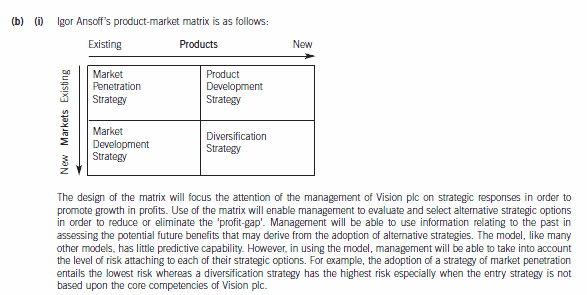ACCA各科目考试具体有什么区别呢?
发布时间:2021-10-18
很多ACCA初学者对报考ACCA科目的顺序有很多疑问,不知道如何选择报考。为了让小伙伴们顺利通过ACCA,在报考的道路上少走弯路,今天51题库考试学习网就来给大家分析一下,同时给大家简单介绍一下各科目之间的关系以及备考科目选择上的小技巧。
一、AB(F1)与SBL(P1+P3)
AB(F1)这门课,会简单教大家用一些模型去分析企业所处的内部以及外部环境,以及一些关于职业道德,企业社会责任的简单介绍。而在SBL课程中,会把这些知识点做深入并细化地讲解,比如分析内外部环境之后企业将如何面对环境的变化,企业在专业层面上的战略、。但ACCA考试规则做了限制,你无法同时报考AB(F1)与SBL,已为中间还隔着F4-F9 6门技能课程。所以你能做的就是打好基础。对于备考SBL,AB(F1)的知识点是SBL的基础,所以在考过AB(F1)之后还是要抽出时间复习AB(F1)。
二、文字类考试
文字类考试,需要考生在理解知识点的基础上同时大量记忆背诵。因此在选择科目时,避免和F4《Corporate and Business law》以及F8《Audit and Assurance》同时备考,增加记忆难度。但是推荐在相邻两个考季中参加考试,因为risk,internal audit内容有重叠,侧重点不同。F8学得很扎实的可以继续学习后面的SBL或者选修高级审计与鉴证《Advanced Audit and Assurance(AAA)》。
三、MA(F2)、PM(F5)与FM(F9)
F2《Management Accounting》是F5业绩管理《Performance Management》和选修高级业绩管理《Advanced Performance Management》的基础。课程涉及管理会计与财务会计的区别,涵盖:管理会计,管理信息,成本会计,预算和标准成本,业绩衡量,短期决策方法。
F2和F5可以考虑先后或者同时学习,在相邻考季中备考,F2中的variance在F5中更加灵活。先学F2,再看F5,F2比较简单,很多常识的知识,为F5打好基础,又可以加深对F2的理解。在这两个学科中,ACCA小伙伴们能够学到:如何处理基本的成本信息,并能向管理层提供能用作预算和决策的信息。同时F9科目又是F5升级版,但是RATIO部分是一样的,所以F5和F9也可以一起考。
以上就是关于ACCA各科目区别的全部内容了,希望对大家有所帮助,准备报考2021年12月ACCA考试的考生,可以着手开始准备了。最后,51题库考试学习网祝愿各位考生都能顺利通过考试。
下面小编为大家准备了 ACCA考试 的相关考题,供大家学习参考。
(b) Explain the advantages and the disadvantages of:
(i) the face to face interview between two people; (6 marks)
(b) (i) The face to face interview is the most common form. of interview. In this situation the candidate is interviewed by a single representative of the employing organisation.
The advantages of such interviews are that they establish an understanding between the participants, are cost effective for the organisation (only one member of the organisation’s staff is involved) and, because of the more personal nature, ensure that candidates feel comfortable.
The disadvantages are that the selection interview relies on the views and impression of a single interviewer that can be both subjective and biased. In addition, the interviewer may be selective in questioning and it is easier for the candidate to hide weaknesses or lack of ability.
(b) Advise Maureen on deregistration for the purposes of value added tax (VAT) and any possible alternative
strategy. (8 marks)
An additional mark will be awarded for the effectiveness with which the information is communicated.
(1 mark)
(b) Advice on Maureen’s VAT position
Deregistration
In order to voluntarily deregister for VAT you must satisfy HMRC that the value of your taxable supplies in the next twelve
months will not exceed £62,000. You will then be deregistered with effect from the date of your request or a later date as
agreed with HMRC.
On deregistering you are regarded as making a supply of all stocks and equipment in respect of which input tax has been
claimed. However, the VAT on this deemed supply need only be paid to HMRC if it exceeds £1,000.
Once you have deregistered, you must no longer charge VAT on your sales. You will also be unable to recover the input tax
on the costs incurred by your business. Instead, the VAT you pay on your costs will be allowable when computing your taxable
profits.
You should monitor your sales on a monthly basis; if your sales in a twelve-month period exceed £64,000 you must notify
HMRC within the 30 days following the end of the twelve-month period. You will be registered from the end of the month
following the end of the twelve-month period.
Flat rate scheme
Rather than deregistering you may wish to consider operating the flat rate scheme. This would reduce the amount of
administration as you would no longer need to record and claim input tax in respect of the costs incurred by your business.
Under the flat rate scheme you would continue to charge your customers VAT in the way that you do at the moment. You
would then pay HMRC a fixed percentage of your VAT inclusive turnover each quarter rather than calculating output tax less
input tax. This may be financially advantageous as compared with deregistering; I would be happy to prepare calculations for
you if you wish.
(b) (i) Explain how the use of Ansoff’s product-market matrix might assist the management of Vision plc to
reduce the profit-gap that is forecast to exist at 30 November 2009. (3 marks)

(c) (i) State the date by which Thai Curry Ltd’s self-assessment corporation tax return for the year ended
30 September 2005 should be submitted, and advise the company of the penalties that will be due if
the return is not submitted until 31 May 2007. (3 marks)
(ii) State the date by which Thai Curry Ltd’s corporation tax liability for the year ended 30 September 2005
should be paid, and advise the company of the interest that will be due if the liability is not paid until
31 May 2007. (3 marks)
(c) Self-assessment tax return
(1) Thai Curry Ltd’s self-assessment corporation tax return for the year ended 30 September 2005 must be submitted by
30 September 2006.
(2) If the company does not submit its self-assessment tax return until 31 May 2007, then there will be an automatic fixed
penalty of £200 since the return is more than three months late.
(3) There will also be an additional corporation tax related penalty of £4,415 (44,150 × 10%) being 10% of the tax unpaid,
since the self-assessment tax return is more than six months late.
Corporation tax liability
(1) Thai Curry Ltd’s corporation tax liability for the year ended 30 September 2005 must be paid by 1 July 2006.
(2) If the company does not pay its corporation tax until 31 May 2007, then interest of £3,035 (44,150 at 7·5% = 3,311
× 11/12) will be charged by HM Revenue & Customs for the period 1 July 2006 to 31 May 2007.
声明:本文内容由互联网用户自发贡献自行上传,本网站不拥有所有权,未作人工编辑处理,也不承担相关法律责任。如果您发现有涉嫌版权的内容,欢迎发送邮件至:contact@51tk.com 进行举报,并提供相关证据,工作人员会在5个工作日内联系你,一经查实,本站将立刻删除涉嫌侵权内容。
- 2020-01-09
- 2020-05-01
- 2020-01-10
- 2020-04-18
- 2020-01-10
- 2020-03-07
- 2020-01-10
- 2020-01-10
- 2020-01-10
- 2020-01-10
- 2020-05-20
- 2020-01-03
- 2020-01-10
- 2020-01-14
- 2020-04-29
- 2020-04-23
- 2020-01-10
- 2020-05-08
- 2019-12-27
- 2020-05-09
- 2019-07-20
- 2019-07-20
- 2019-07-20
- 2020-04-08
- 2020-04-20
- 2020-01-09
- 2020-02-05
- 2020-01-10
- 2020-01-10
- 2020-02-05